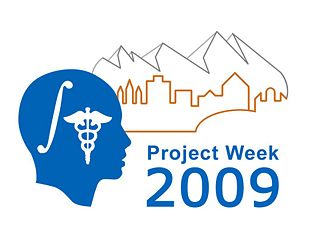Two-tensor tractography in Slicer using Python and Teem
 Return to Project Week Main Page |
Key Investigators
- BWH: Madeleine Seeland
- BWH: Carl-Fredrik Westin
- BWH: Gordon Kindlmann
- BWH: Nobuhiko Hata
Objective
Our objective is to finalize the integration of the Two-Tensor Streamline Tractography method in [1] into Slicer and to test it on diverse DWI datasets. Furthermore the optimal parameter settings to run the algorithm needs to be investigated.
Approach, Plan
We are integrating the Two-Tensor Streamline Tractography into Slicer. The complete details on the method are summarized in [1].
The implementation of our project is carried out in Python. The Two-Tensor Tractography function calls are already implemented in the Teem library and can be accessed using the Python wrappings for Teem.
Before integrating the Two-Tensor Tractography algorithm into Slicer, the optimal parameter settings for the algorithm needs to be investigated.
Furthermore we need to find a way to parallelize the tractography algorithm.
Another plan is to apply a noise filter on the DWI's before applying the Two-Tensor Tractography algorithm, as this may lead to more accurate fiber results.
Further, we want to extend the Two-Tensor Tractography module by fiducical seeding in order to be able to do interactive tractography seeding by using a tracking device.
Progress
- The implementation of the Two-Tensor Tractography is already finished. Currently I'm testing the algorithm with different parameter settings.
- Extension of the Two-Tensor Tractography module by fiudical seeding.
- Working with Marco Ruiz on getting my module working with GWE (Grid Wizard Enterprise) ([1]) in order to parallelize the execution of my algorithm. Luca Antiga helped by getting Python modules to run as command line modules so they can be executed by GWE.
References
- [1] Qazi AA, Radmanesh A, O'Donnell L, Kindlmann G, Peled S, Whalen S, Westin CF, Golby AJ. Resolving crossings in the corticospinal tract by two-tensor streamline tractography: method and clinical assessment using fMRI. Neuroimage 2008
- [2] Peled S, Friman O, Jolesz F, Westin CF. Geometrically constrained two-tensor model for crossing tracts in DWI. Magnetic Resonance Imaging 2006;24:1263-1270.